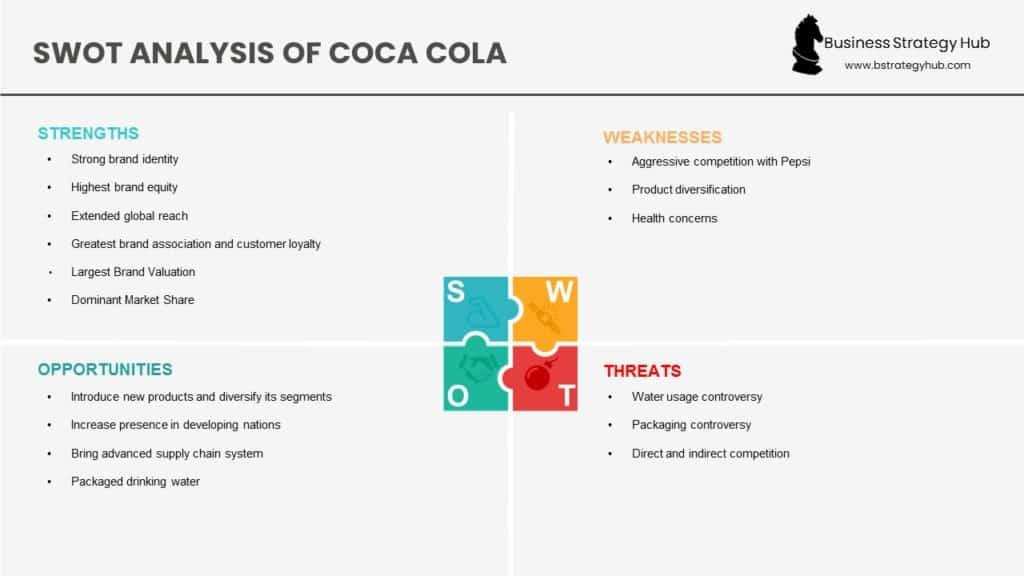SWOT Analysis: Examples, Templates, & Prompts

If you’re a busy marketing manager, this comprehensive guide offers ready-to-use AI templates and prompts, top tips, and FAQs to help you with SWOT analysis. Plus, our AI-powered SWOT Analysis Assistant will help you build your own SWOT, instantly and free.
How to Use Our SWOT Analysis Assistant
Just answer a few questions about your marketing campaign, your business or product, and your target audience, and our AI-powered Assistant will draft a SWOT analysis for you.
Remember: the more information you give it, the better your SWOT will get. You can keep refining the SWOT until you’re happy with the results — then have it emailed to you, instantly and free.
More AI Prompts for Your SWOT Analysis
Once you’ve drafted your SWOT analysis, here are some additional prompts you can use to polish and perfect it.
- Expand on strengths: Identify any additional strengths that could be leveraged to gain a competitive advantage.
- Overcome weaknesses: Suggest strategies to address and overcome the identified weaknesses.
- Find opportunities in emerging markets: Highlight potential opportunities in untapped or emerging markets and propose ways to capitalize on them.
- Mitigate threats: Propose effective measures to mitigate or minimize the impact of identified threats on the organization.
- Competitive analysis: Provide an analysis of the key competitors’ strengths and weaknesses and how they compare to our own.
- SWOT prioritization: Rank the identified strengths, weaknesses, opportunities, and threats in order of their significance and impact on the business.
- Find industry trends: Explore current industry trends and determine how they might influence the organization’s SWOT factors.
- Analyze customer perspectives: Consider the viewpoints of different customer segments and identify how their needs and preferences align with the organization’s SWOT factors.
- Innovation opportunities: Suggest innovative approaches or ideas that could leverage the organization’s strengths and exploit emerging opportunities.
- Long-term sustainability: Assess the long-term sustainability of the identified strengths, weaknesses, opportunities, and threats, and recommend strategies to ensure continued growth and competitiveness.
Examples of SWOT Analysis
The Home Depot
Home Depot is a leading home improvement retailer with a vast product range and strong brand image. It focuses on tools, hardware, building materials, and valuable services like tool rentals. This SWOT analysis effectively summarizes Home Depot’s competitive landscape, highlighting its advantages, limitations, and areas for strategic improvement.
- Clear Strengths: It highlights Home Depot’s dominant market position, profitability, value proposition, and successful BOPIS strategy. These strengths establish a solid foundation for the company.
- Recognized Weaknesses: It acknowledges limitations like geographical concentration, aging infrastructure, and a late shift to eCommerce. Identifying these weaknesses allows Home Depot to address them strategically.
- Actionable Opportunities: The analysis identifies promising avenues for growth, such as international expansion, increased online presence, and focusing on the growing home decor market. These provide clear direction for future endeavors.
- Potential Threats Considered: It mentions growing competition, economic downturns, and price fluctuations as possible threats. This awareness allows Home Depot to plan mitigation strategies for future success.
General Motors
General Motors is a global leader in car manufacturing. This SWOT analysis effectively summarizes GM’s competitive landscape by highlighting its strengths, acknowledging weaknesses, and identifying actionable opportunities and threats. The analysis provides a clear roadmap for GM’s future strategic direction.
- Strengths Drive Success: The SWOT analysis effectively highlights GM’s strengths. Its strong brand reputation fosters customer loyalty, while its commitment to sustainability through certifications like “Energy Star” positions it favorably.
- Weaknesses Offer Room for Growth: The analysis acknowledges weaknesses by pointing out GM’s limited presence in developing countries and over-reliance on the US market. This identifies areas where GM can expand its reach and diversify its revenue streams.
- Opportunities for the Future: The analysis pinpoints electric and autonomous vehicles as key opportunities. Cruise, GM’s self-driving subsidiary, demonstrates its proactive approach to this evolving market.
- Threats Demand Attention: The analysis recognizes external threats like global recession (impacting sales) and labor strikes (disrupting production). This awareness allows GM to develop strategies to mitigate these risks.
The Coca-Cola Company

Coca-Cola is a globally recognized brand with a vast product portfolio, strong market share, and an iconic brand identity. Here is an example of their SWOT analysis and why it’s effective.
- Strengths: Coca-Cola boasts a powerful brand identity and a loyal customer base. Its high brand value and extensive global reach further solidify its market dominance.
- Weaknesses: Pepsi’s competition and a lack of product diversification beyond sugary drinks pose challenges. Health concerns surrounding sugary drinks and the lack of healthy alternatives are also areas of concern.
- Opportunities: Introducing healthier options alongside their core business and increasing their presence in developing nations present exciting growth prospects. Expanding their bottled water brands and capitalizing on partnerships like the one with Constellation Brands offer further opportunities.
- Threats: Controversies regarding water usage and pollution lawsuits tarnish their reputation. Competition from various beverage companies, economic downturns, and a growing health-conscious consumer base pose significant threats.
Example: SWOT Analysis Using our AI Assistant
Company Name: Green Gables Eco-Cleaning: A Sustainable Cleaning Solution
Green Gables Eco-Cleaning is a rapidly growing startup in the cleaning industry. They offer residential and commercial cleaning services using eco-friendly products and sustainable practices. Green Gables is committed to providing a healthy clean for clients and the environment.
Green Gables Eco-Cleaning: SWOT Analysis
Strengths:
- Unique Selling Proposition (USP): Green Gables offers a differentiated service, focusing on eco-friendly cleaning solutions that appeal to environmentally conscious customers.
- Strong Brand Image: Their commitment to sustainability positions them favorably and fosters customer trust.
- Early Mover Advantage: Being an early adopter in the eco-friendly cleaning space gives them a potential head start in capturing market share.
- Lower Operational Costs: Using eco-friendly products can reduce costs compared to traditional cleaning chemicals.
Weaknesses:
- Limited Brand Awareness: As a startup, brand recognition may be low compared to established cleaning companies.
- Higher Training Costs: Staff may require additional training to properly use eco-friendly cleaning products and techniques.
- Pricing Strategy: Eco-friendly products might be more expensive, potentially leading to higher customer service costs.
- Limited Service Range: Green Gables may not yet offer all the services of established cleaning companies, like carpet or deep cleaning.
Opportunities:
- Growing Market: The demand for eco-friendly cleaning services is increasing, presenting a significant growth opportunity.
- Partnerships: Collaborations with green building initiatives or eco-conscious businesses can expand their reach.
- Expand Service Offerings: As the company grows, it can introduce additional eco-friendly cleaning services to meet customer needs.
- Positive Public Relations: Green Gables can leverage its eco-friendly approach for positive media coverage and brand recognition.
Threats:
- Competition: Established cleaning companies may adopt eco-friendly practices, posing a competitive threat.
- Economic Downturn: Customers may prioritize affordability over eco-friendly options in a recession.
- Availability of Eco-Friendly Products: The availability and cost of effective eco-friendly cleaning products can impact their operations.
- Regulations: Stricter environmental regulations might increase compliance costs for Green Gables.
Best Practices for SWOT Analysis
- Focus on Key Factors: Prioritize the strengths that positively impact your strategy and the weaknesses that pose the most significant barriers to achieving your goals. Similarly, identify opportunities with a high likelihood of success and considerable potential for growth alongside the most critical threats that could derail your strategy.
- Cross-functional Collaboration: During the SWOT analysis, involve diverse teams across the organization (marketing, sales, operations, finance). This ensures a comprehensive view and prioritizes factors relevant to each department’s contribution to achieving strategic objectives. For example, including the marketing team in the analysis can help identify a competitor’s new product launch (threat) and its potential impact on market share.
- Conduct External Research: Analyze market data from research firms like Gartner or Nielsen, competitor strategies through annual reports or press releases, and emerging trends through industry publications or conferences to identify potential opportunities and threats with greater accuracy. For example, a company in the food industry might discover a growing consumer demand for plant-based alternatives (opportunity) through market research reports.
- Be Realistic and Unbiased: Objectively evaluate both internal strengths and weaknesses. Don’t overinflate strengths or downplay weaknesses. Consider limitations alongside capabilities. For instance, a company with a strong brand may also have a high employee turnover rate (weakness) that needs to be addressed.
- Update Regularly: Don’t treat your SWOT analysis as a static document. Schedule periodic updates, perhaps quarterly or annually, to reflect evolving market dynamics, new competitor strategies (e.g., mergers and acquisitions), or changing customer needs.
- Use Quantitative Data: Wherever possible, support your SWOT analysis with relevant data and metrics like market share, customer satisfaction ratings, sales figures, or website traffic. This strengthens the credibility of your study and facilitates data-driven decision-making. Here is an example of a helpful template to assist you in quantitative research for SWOT analysis.
- Identify Actionable Insights: Don’t let your SWOT analysis end at identification. Translate your findings into concrete actions and strategies. Develop plans to utilize your strengths, address weaknesses, capitalize on opportunities, and mitigate threats. Assign ownership and timelines for each action item to ensure all strategies are implemented.
The Media Shower platform offers dozens of AI assistants to help you do marketing faster, cheaper, and better. Click here for a free trial.




